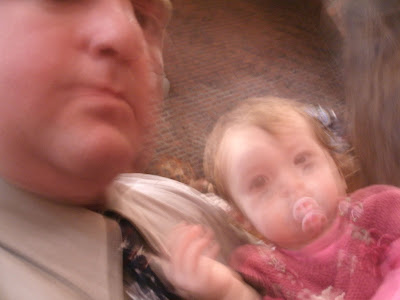
This Sunday, we went to
St Mark's Church in Portland, Oregon (
APCK).

The parish left the Diocese of Oregon (TEC) back in the 1990s. It is a wonderful Anglican Missal/1928 Prayer Book catholic parish in the heart of Portland.

We attended the 10am High Mass (not actually a high Mass, but only lacking the solemn vestments for the deacon and subdeacon).

The church was beautiful, an exquisitly ornamented Roman basilica-style church, full of color and images. The incense was pleasant and the minor propers sung by male voices was superb. But what really blew me away was getting to sing the "Amen" at the end of the hymns.

The sanctuary is separated from the nave by a marble screen topped with statues, reminescent of old St Peter's in Rome.

The church is dark and colorful, seating about 150 if you include the side chapel aisles. There were probably about 80-90 people there.

One of the most wonderful things was that the percentage of children in the congregation was probably the highest I've ever encountered.

The people were very nice as was Father Lillegard, the Rector.

It was great to hear the zimbelstern on the organ. The side chapel of the blessed Mother was very tasteful. In all, a great worship experience; a jewel of the pacific northwest. I wish it were closer so that we could visit more often.












 Bishop John Broadhurst, Bishop of the Fulham jurisdiction in the Diocese of London and Chairman of Forward in Faith, has released a preliminary response to the text of the Apostolic Constitution Anglicanorum coetibus. He has a knack for telling it like it is, especially when the obvious is so hard to discern.
Bishop John Broadhurst, Bishop of the Fulham jurisdiction in the Diocese of London and Chairman of Forward in Faith, has released a preliminary response to the text of the Apostolic Constitution Anglicanorum coetibus. He has a knack for telling it like it is, especially when the obvious is so hard to discern.




